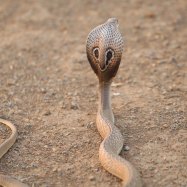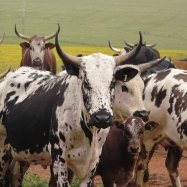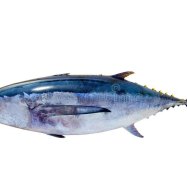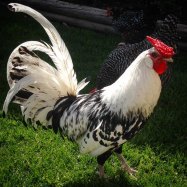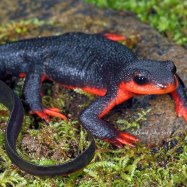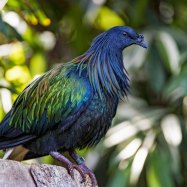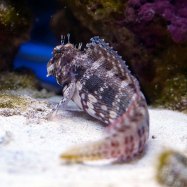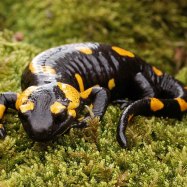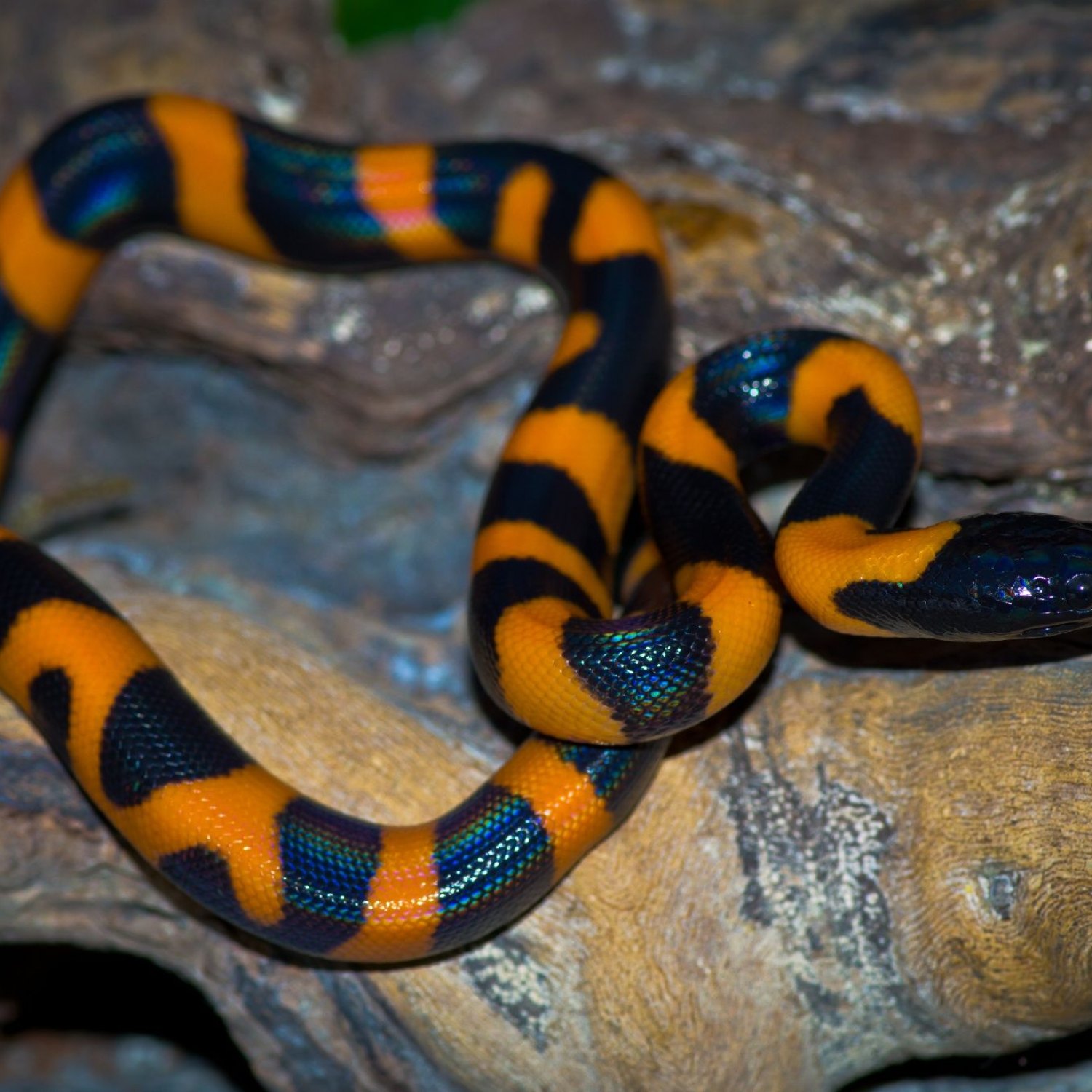
Bismarck Ringed Python
Up to 2.5 meters
The stunning Bismarck Ringed Python is a large and robust snake native to Papua New Guinea. Keeping its size at under 2.5 meters, this python is a popular pet choice for reptile enthusiasts. With its striking and unique ringed pattern, it's easy to see why this python is a favorite among snake lovers. Despite its intimidating appearance, this snake is actually non-venomous and poses no threat to humans. Learn more about this beautiful member of the Pythonidae family and its natural habitat in Papua New Guinea.
Animal Details Summary:
Common Name: Bismarck Ringed Python
Kingdom: Animalia
Habitat: Tropical rainforests, lowland forests
Originating from Papua New Guinea and the Bismarck Archipelago, this elusive species is a sight to behold Bismarck Ringed Python. With its unique coloration, impressive size, and intriguing lifestyle, the Bismarck Ringed Python is a subject of fascination for animal enthusiasts and researchers alike. In this article, we will delve deeper into the world of this rare species, getting to know its habitats, behaviors, and other exciting details that make it a truly remarkable creature.
The Taxonomy of the Bismarck Ringed Python
Before we explore the world of the Bismarck Ringed Python, let us first understand its taxonomy. Scientifically classified as Bothrochilus boa, this species belongs to the Animalia kingdom, Chordata phylum, and Reptilia class. Its order is Squamata, and it is part of the Pythonidae family, which also includes other python species such as the reticulated python and the green tree python.Geographical Distribution and Habitat
The Bismarck Ringed Python is an endemic species to Papua New Guinea and the nearby Bismarck Archipelago. It is primarily found in tropical rainforests and lowland forests, where it thrives in the humid and warm climate. Due to its limited geographical distribution, this species is considered rare and hard to come by in the wild.Appearance and Coloration
One of the most distinctive features of the Bismarck Ringed Python is its coloration Banded Palm Civet. Its body is mostly dark brown, reddish-brown, or black, with a series of light-colored rings around its body. These rings give the species its common name, as it resembles the rings on a tree trunk. Its head is often a different color from its body, with variations of lighter and darker shades.In terms of body shape, the Bismarck Ringed Python is known for its large and robust build. It can grow up to 2.5 meters in length, making it one of the largest python species in its range. Its head is also relatively large, with a triangular shape and small, beady eyes. Its body is muscular, allowing it to be a skilled predator in its natural habitat.
Feeding and Hunting Behavior
Like most python species, the Bismarck Ringed Python is a carnivore, meaning it feeds on other animals. Its diet mainly consists of small mammals, birds, and reptiles, which it hunts using its excellent camouflage and stealth. Due to its large size, this species is also able to take down larger prey, such as rodents and even small deer.One unique behavior of the Bismarck Ringed Python is its ability to constrict its prey to kill it. This is done by coiling its powerful body around the prey and squeezing until it suffocates. This behavior also helps in digestion, as the pre-digested food is easier to consume.
Reproduction and Mating
Little is known about the mating and reproduction behaviors of the Bismarck Ringed Python, as there have been very few documented sightings of this species in the wild. It is believed that they are egg-laying snakes, with females laying a clutch of 6-10 eggs at a time. These eggs are incubated for around 70 days before hatching.The female Bismarck Ringed Python is also known to be very protective of her eggs, often staying close to them until they hatch. Once the eggs have hatched, the mother will not provide any further care for her offspring, as they are able to fend for themselves from birth.
Threats and Conservation Status
Due to its limited distribution and elusive nature, not much is known about the threats facing the Bismarck Ringed Python. However, like many other snake species, it faces a number of threats, including habitat loss and degradation, illegal capture for pet trade, and the introduction of invasive species.The current conservation status of the Bismarck Ringed Python is listed as "Data Deficient" by the International Union for Conservation of Nature (IUCN). This means that there is not enough information available to accurately assess its population and conservation needs. However, with increasing deforestation and illegal capture, it is crucial that measures be taken to protect this species before it becomes endangered.
The Role of NLP in Studying the Bismarck Ringed Python
Natural Language Processing (NLP) is a field of artificial intelligence (AI) that focuses on teaching computers to understand and process natural human language. It has various applications in different industries, including the study of animals.With the limited information available on the Bismarck Ringed Python, NLP can play a crucial role in gathering and analyzing data to better understand this species. It can help researchers process and analyze large amounts of data from different sources, such as academic papers, reports, and field observations. NLP can also help improve our understanding of the Bismarck Ringed Python's behaviors and habitats by analyzing any available language patterns in its ecosystem.
The Enigmatic Nature of the Bismarck Ringed Python
The Bismarck Ringed Python is undoubtedly a fascinating creature, but its elusive nature adds to its mystery and enigma. Despite being an endemic species to Papua New Guinea, it remains a rare sight in the wild, with very few documented sightings and studies.The limited information available on this species highlights the need for further research and conservation efforts to protect it from the threats it faces. As we continue to uncover more information about the Bismarck Ringed Python, we can gain a deeper understanding of this elusive creature and work towards preserving its unique place in the animal kingdom.
In conclusion, the Bismarck Ringed Python is a truly remarkable and captivating species, with its distinct physical features, mysterious behavior, and limited geographical distribution. As we continue to explore and learn more about this species, let us also work towards its conservation and protection, ensuring that it remains a part of the natural world for generations to come.

Bismarck Ringed Python
Animal Details Bismarck Ringed Python - Scientific Name: Bothrochilus boa
- Category: Animals B
- Scientific Name: Bothrochilus boa
- Common Name: Bismarck Ringed Python
- Kingdom: Animalia
- Phylum: Chordata
- Class: Reptilia
- Order: Squamata
- Family: Pythonidae
- Habitat: Tropical rainforests, lowland forests
- Feeding Method: Carnivorous
- Geographical Distribution: Papua New Guinea, Bismarck Archipelago
- Country of Origin:
- Location: Papua New Guinea
- Animal Coloration: Dark brown, reddish-brown, or black
- Body Shape: Large, robust
- Length: Up to 2.5 meters
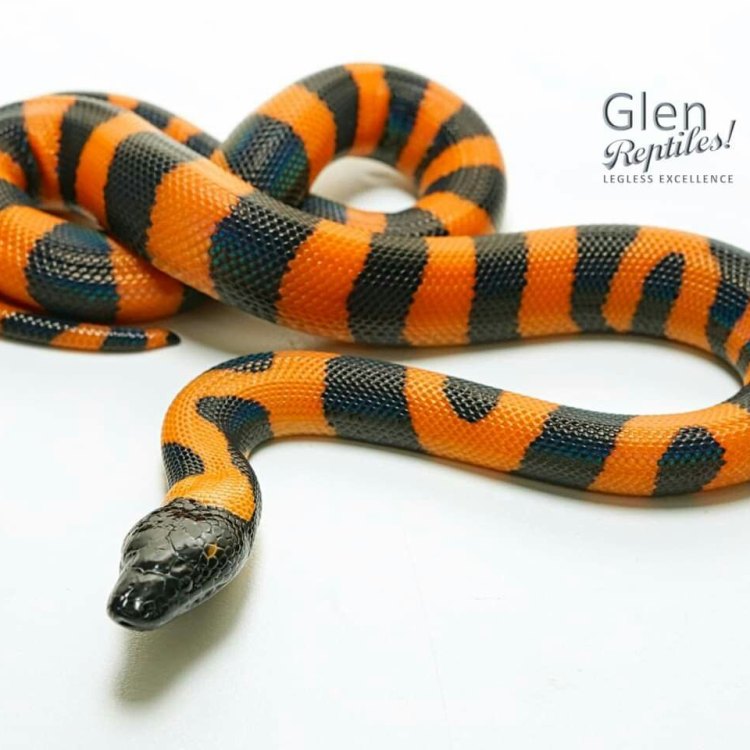
Bismarck Ringed Python
- Adult Size: Around 2.5 meters
- Average Lifespan: Unknown
- Reproduction: Oviparous
- Reproductive Behavior: Mating occurs during the rainy season
- Sound or Call: Not available
- Migration Pattern: Non-migratory
- Social Groups: Solitary
- Behavior: Nocturnal
- Threats: Habitat loss, hunting
- Conservation Status: Data Deficient
- Impact on Ecosystem: Unknown
- Human Use: Not directly used by humans
- Distinctive Features: Ringed patterns on body, large size
- Interesting Facts: The Bismarck Ringed Python is one of the largest snakes found in Papua New Guinea. It is known for its distinct ringed pattern on its body.
- Predator:
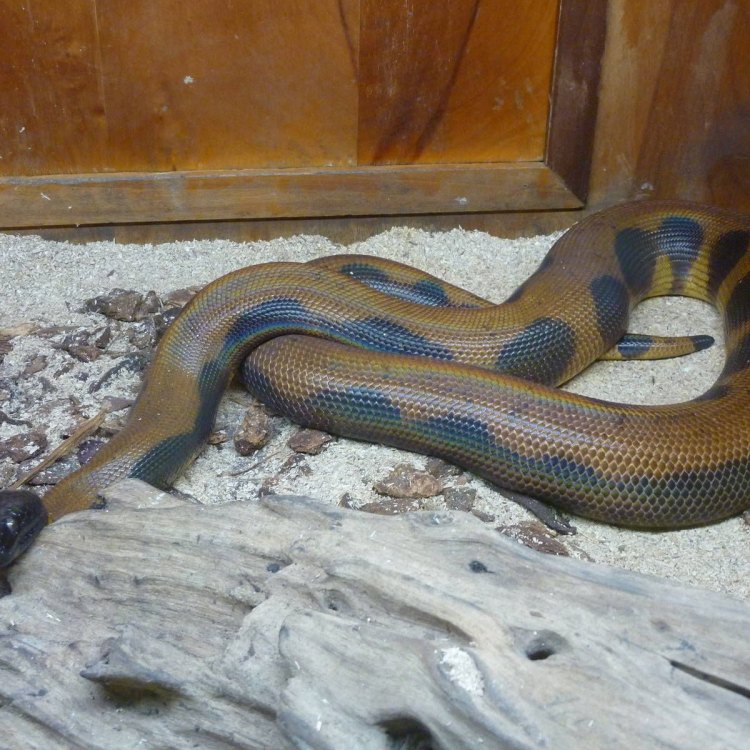
Bothrochilus boa
The Enigmatic Beauty of the Bismarck Ringed Python: A Fascinating Creature in the Tropical Jungle
Deep in the dense, humid jungles of Papua New Guinea, an enigmatic beauty lurks in the shadows. Standing at an impressive 2.5 meters and adorned with striking ringed patterns on its body, the Bismarck Ringed Python is a creature like no other. Not much is known about this elusive and mysterious snake, making it a fascinating subject for wildlife enthusiasts and researchers alike PeaceOfAnimals.Com.Adult Size and Average Lifespan:
One of the most striking features of the Bismarck Ringed Python is its size. As an adult, it can reach lengths of around 2.5 meters, making it one of the largest snakes found in Papua New Guinea. However, due to its elusive nature, the exact average lifespan of this species is still unknown.
Reproductive Behavior and Mating:
The Bismarck Ringed Python is an oviparous species, meaning its eggs are fertilized and hatched externally. Mating usually occurs during the rainy season, which is typically from December to March. During this time, males compete for females by engaging in combat and wrestling matches.
Sound or Call, Migration Pattern, and Social Groups:
Unlike many other species of snakes, the Bismarck Ringed Python does not make any distinctive sounds or calls. It is also a non-migratory species, meaning it does not travel long distances in search of food or shelter Black Throat Monitor. These snakes are solitary creatures, only coming together during the mating season.
Behavior and Threats:
The Bismarck Ringed Python is a nocturnal creature, preferring to hunt and explore under the cover of darkness. During the day, it can be found hiding in crevices or burrows. Its diet mainly consists of small mammals, birds, and reptiles.
Despite its size and strength, the Bismarck Ringed Python unfortunately faces a number of threats. Habitat loss due to deforestation, as well as hunting for its skin and meat, have led to a decline in its population. These snakes are also valued for traditional medicine, adding to the threat of overhunting. As a result, the Bismarck Ringed Python is currently listed as Data Deficient on the IUCN Red List, and its population is on the decline.
Impact on Ecosystem:
The exact impact of the Bismarck Ringed Python on the ecosystem is still unknown. As apex predators, they play an essential role in maintaining the balance of their habitat and regulating herbivore populations. However, without proper research and data, the full extent of their impact remains a mystery.
Human Use and Distinctive Features:
Unlike many other snakes, the Bismarck Ringed Python is not directly used by humans. Its large size and elusive nature make it a challenging prey for hunters, and its venom is not considered to be dangerous to humans. However, their distinct ringed patterns and grand size make them a sought-after species in the exotic pet trade. This, combined with habitat loss and hunting, poses a threat to their conservation status.
Interesting Facts:
Aside from its impressive size and distinctive features, the Bismarck Ringed Python holds many interesting facts. These snakes are known to be excellent swimmers, often found in and around bodies of water. They also have a unique defense mechanism of inflating themselves with air when threatened, making them appear larger and more intimidating. Their rings also serve as camouflage in their natural habitat, helping them blend in with their surroundings.
Predator:
As with many other species, the Bismarck Ringed Python also has a predator in the wild. The saltwater crocodile, known to inhabit the same areas as these snakes, is a known predator of the Bismarck Ringed Python. With its powerful jaws and stealthy hunting abilities, the saltwater crocodile poses a significant threat to these elusive snakes.
In conclusion, the Bismarck Ringed Python is a fascinating and enigmatic creature living in the tropical jungles of Papua New Guinea. Its impressive size, distinctive ringed patterns, and elusive behavior make it a sought-after subject for wildlife enthusiasts and researchers. However, its decline in population due to various threats highlights the need for further research and conservation efforts to protect this majestic species. With proper conservation measures, we can ensure that this unique snake continues to thrive in its natural habitat for generations to come.
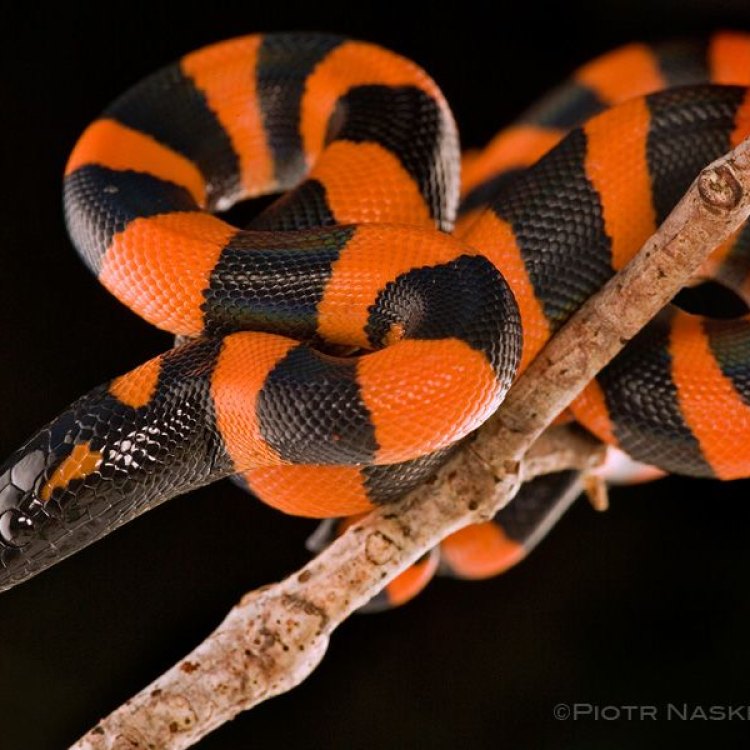
Disclaimer: The content provided is for informational purposes only. We cannot guarantee the accuracy of the information on this page 100%. All information provided here may change without prior notice.



